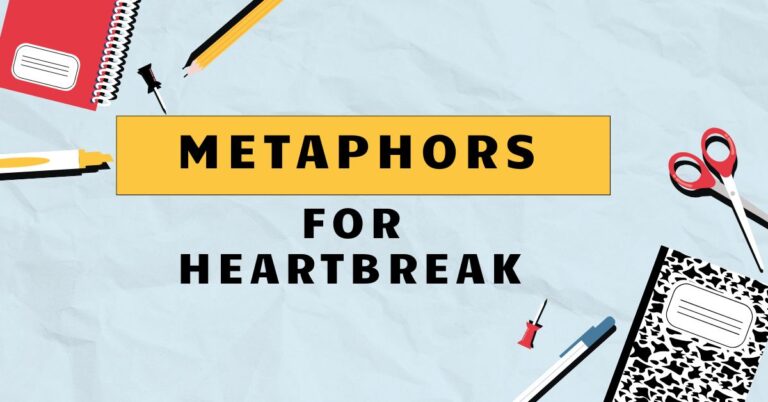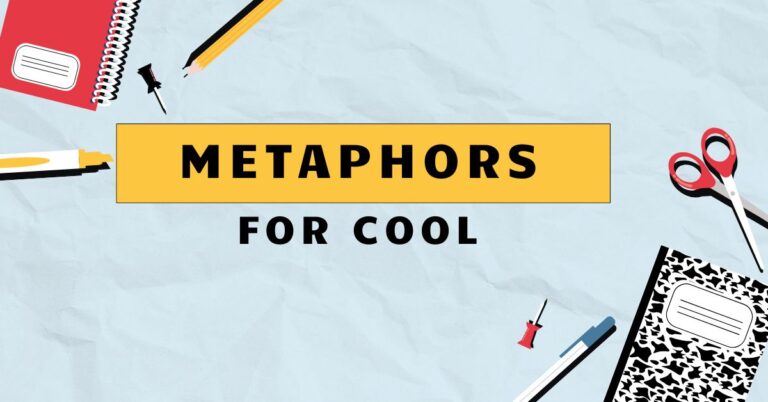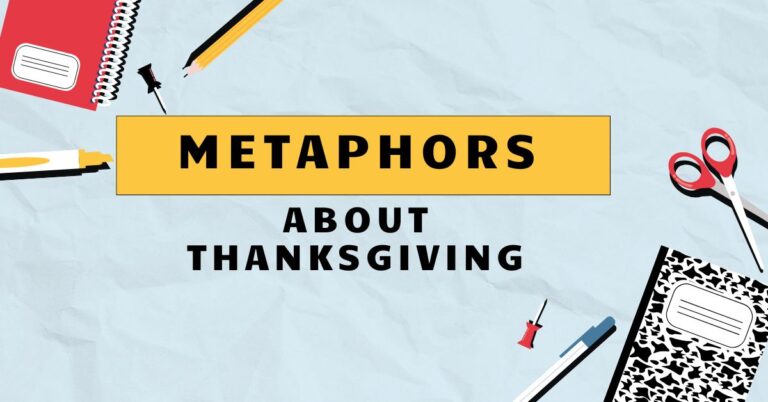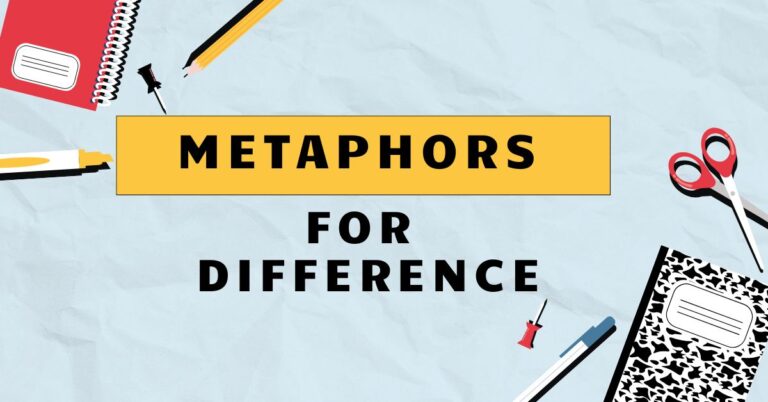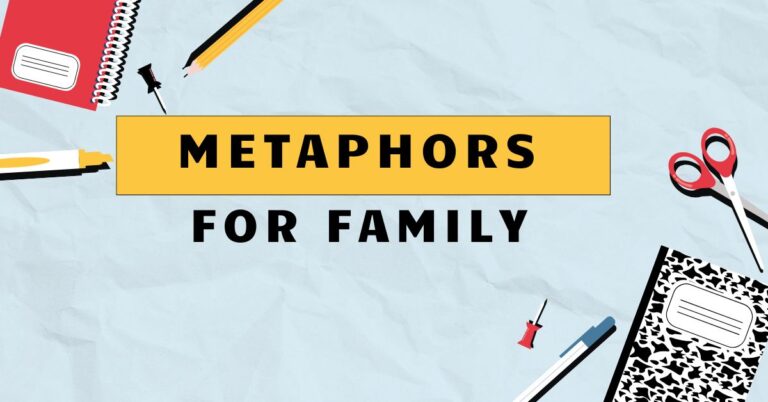51 Sunset Metaphors: Grammar, Usage, and Creative Examples
Metaphors are powerful tools that enrich our language, allowing us to express complex ideas and emotions in vivid and imaginative ways. When describing the beauty of a sunset, metaphors can transform a simple observation into a work of art.
Understanding how to construct and interpret these metaphors not only enhances our appreciation of literature and poetry but also improves our own writing and communication skills. This article explores the grammar, usage, and creative application of sunset metaphors, providing a comprehensive guide for learners of all levels to master this expressive linguistic device.
Table of Contents
- Introduction
- Definition of Metaphor
- Structural Breakdown of Sunset Metaphors
- Types of Sunset Metaphors
- Examples of Sunset Metaphors
- Usage Rules for Sunset Metaphors
- Common Mistakes with Sunset Metaphors
- Practice Exercises
- Advanced Topics in Sunset Metaphors
- Frequently Asked Questions
- Conclusion
Definition of Metaphor
A metaphor is a figure of speech that directly compares two unrelated things without using “like” or “as.” It asserts that one thingisanother, creating a connection based on shared characteristics or qualities. Metaphors are essential for adding depth, color, and emotional resonance to language, transforming ordinary descriptions into evocative imagery.
They play a crucial role in poetry, literature, and everyday conversation, allowing us to express abstract concepts in tangible and relatable terms.
In the context of describing a sunset, metaphors allow us to go beyond simple observations of color and light, and instead, imbue the sunset with deeper meaning and emotional significance. For instance, instead of saying “the sunset was red,” we might say “the sunset was a fiery inferno,” creating a more vivid and dramatic image in the reader’s mind.
Structural Breakdown of Sunset Metaphors
The structure of a sunset metaphor typically involves two key elements: thetenorand thevehicle. The tenor is the subject being described (in this case, the sunset), and the vehicle is the object or concept to which the sunset is being compared.
The effectiveness of a metaphor depends on the strength and relevance of the connection between the tenor and the vehicle. A well-constructed metaphor should evoke clear imagery and resonate with the reader’s understanding of both the sunset and the vehicle.
For example, in the metaphor “the sunset was a painter’s masterpiece,” the tenor is the sunset, and the vehicle is a painter’s masterpiece. The implied connection is that both the sunset and a masterpiece possess qualities such as beauty, artistry, and skill.
The metaphor works because it taps into our understanding and appreciation of art to enhance our perception of the sunset.
To create effective sunset metaphors, consider the following structural elements:
- Identify the key characteristics of the sunset: What colors are prominent? What is the overall mood or feeling it evokes?
- Choose a vehicle that shares those characteristics: What object, concept, or image carries similar qualities?
- Construct a statement that equates the tenor and the vehicle: “The sunset is [vehicle].”
- Ensure the metaphor is clear, evocative, and relevant: Does it create a strong mental image? Does it enhance the reader’s understanding or appreciation of the sunset?
Types of Sunset Metaphors
Sunset metaphors can be categorized based on the types of images and concepts they evoke. Here are some common categories:
Color Metaphors
Color metaphors focus on the dominant hues of the sunset, comparing them to other objects or phenomena that share similar colors. These metaphors often evoke strong visual imagery and can be particularly effective in capturing the intensity and vibrancy of a sunset.
Nature Metaphors
Nature metaphors draw parallels between the sunset and other natural elements, such as fire, water, or landscapes. These metaphors often highlight the dynamic and transformative qualities of a sunset, emphasizing its connection to the broader natural world.
Emotion Metaphors
Emotion metaphors associate the sunset with specific feelings or moods, such as peace, joy, or melancholy. These metaphors tap into the emotional resonance of the sunset, allowing the writer to convey deeper meanings and connect with the reader on a more personal level.
Object Metaphors
Object metaphors compare the sunset to inanimate objects, such as paintings, jewels, or fabrics. These metaphors often emphasize the beauty, artistry, or preciousness of the sunset, highlighting its aesthetic qualities.
Examples of Sunset Metaphors
Here are several examples of sunset metaphors, organized by category, to illustrate the different ways you can describe a sunset using figurative language.
Color Metaphor Examples
Color metaphors are powerful tools for describing the vibrant and dynamic hues of a sunset. They allow you to paint a vivid picture in the reader’s mind by comparing the sunset’s colors to other objects or phenomena that share similar shades and tones.
The following table provides a range of examples that showcase the versatility of color metaphors in capturing the essence of a sunset.
| Metaphor | Explanation |
|---|---|
| The sunset was a molten gold river flowing into the horizon. | Compares the golden hues to liquid gold, emphasizing the fluidity and richness of the color. |
| The sky bled crimson, a wound in the day’s fading light. | Uses the color crimson to evoke a sense of drama and the end of the day. |
| Orange flames licked the clouds, consuming the blue canvas above. | Compares the orange color to flames, suggesting intensity and transformation. |
| The sunset was a tapestry woven with threads of scarlet and saffron. | Emphasizes the intricate blend of colors, likening it to a detailed piece of fabric. |
| Indigo shadows crept across the land as the sun dipped below the horizon. | Highlights the deep blue-purple color as it spreads during twilight. |
| The sky was awash in rose-tinted dreams. | Connects the pinkish hue to a dreamy, gentle atmosphere. |
| The clouds were brushed with strokes of vermilion, a fiery farewell. | Uses the vivid red-orange color to convey a sense of finality and intensity. |
| The sunset was a cascade of amber light, pouring over the world. | Compares the warm, golden-yellow color to a waterfall of light. |
| The horizon glowed with a topaz radiance, a gemstone in the sky. | Likens the bright, yellowish-orange color to a precious gem. |
| The sky was painted with hues of lavender and lilac, a serene masterpiece. | Emphasizes the soft, purple tones and their calming effect. |
| The sunset blazed with the intensity of a ruby, a precious jewel in the evening sky. | Compares the deep red color to a ruby, highlighting its brilliance and value. |
| The clouds turned the color of burnt sienna, a rich and earthy tone. | Relates the brownish-orange color to a natural pigment, adding depth and warmth. |
| The sky was a canvas of coral and peach, a delicate and warm embrace. | Uses the soft, pinkish-orange colors to create a sense of comfort and tenderness. |
| The sunset mirrored the colors of a peacock’s tail, a vibrant display of nature’s artistry. | Compares the diverse and iridescent colors to the striking plumage of a peacock. |
| Golden honey dripped from the clouds, sweetening the end of the day. | Uses the color and texture of honey to convey a sense of sweetness and warmth. |
| The sky was a swirling vortex of bronze and copper, a metallic masterpiece. | Compares the warm, metallic colors to a dynamic and powerful force. |
| The sunset was a symphony of magenta and mauve, a harmonious blend of colors. | Emphasizes the balance and beauty of the mixed purple and pink tones. |
| The clouds were edged with silver, a precious lining to the darkening sky. | Highlights the bright, reflective quality of silver and its contrast with the darker tones. |
| The sunset was a kaleidoscope of colors, constantly shifting and transforming. | Emphasizes the dynamic and ever-changing nature of the colors. |
| The sky was a watercolor painting of cerulean and gold, a tranquil and serene scene. | Uses the soft, blended colors to create a sense of peace and tranquility. |
| The sunset was a fiery phoenix, its colors erupting in a final blaze of glory. | Compares the intense colors to the mythical bird, symbolizing rebirth and transformation. |
| The clouds resembled spun gold, delicate and ethereal in the fading light. | Highlights the precious and fragile quality of the golden hues. |
| The sky glowed with the warmth of a Tuscan sunset, a rich and inviting palette. | Relates the colors to a specific place known for its beautiful sunsets, adding cultural context. |
| The sunset was a prism of colors, refracting light into a spectrum of beauty. | Emphasizes the way the light is broken into different colors, creating a dazzling effect. |
Nature Metaphor Examples
Nature metaphors connect the sunset to other elements of the natural world, creating a sense of harmony and interconnectedness. These metaphors can evoke powerful imagery and emphasize the dynamic and transformative qualities of a sunset.
By drawing parallels between the sunset and other natural phenomena, you can deepen the reader’s appreciation of both the sunset and the broader environment. The following examples illustrate the diverse ways in which nature metaphors can be used to describe a sunset.
| Metaphor | Explanation |
|---|---|
| The sunset was a forest fire consuming the horizon. | Compares the intense colors and spreading light to a raging fire, emphasizing its power. |
| The sky was a vast ocean of molten lava. | Likens the fiery colors to a volcanic eruption, conveying heat and intensity. |
| The sunset was a blooming flower, unfolding its petals of light. | Compares the expanding colors to the opening of a flower, suggesting beauty and growth. |
| The clouds were mountains of fire, towering over the earth. | Emphasizes the size and grandeur of the clouds, likening them to fiery peaks. |
| The sunset was a gentle wave washing over the land. | Creates a sense of peace and tranquility, comparing the fading light to a calming wave. |
| The sky was a garden of celestial blooms. | Suggests a lush and vibrant scene, with the sunset’s colors resembling flowers. |
| The sunset was a river of light flowing towards the night. | Conveys a sense of movement and transition, as the light gradually fades. |
| The clouds were islands in a sea of fire. | Highlights the contrast between the clouds and the fiery sky, creating a dramatic image. |
| The sunset was a symphony of wind and light, a natural masterpiece. | Emphasizes the harmony and beauty of the natural elements working together. |
| The sky was a canvas painted with the colors of dawn’s promise. | Connects the sunset to the anticipation and hope of a new day. |
| The sunset was a celestial waterfall cascading into the darkness. | Compares the falling light to a waterfall, suggesting a powerful and continuous flow. |
| The clouds were like brushstrokes of fire across the sky. | Emphasizes the artistic quality of the sunset, likening it to a painting. |
| The sunset was a desert landscape, painted in hues of sand and fire. | Creates a sense of vastness and desolation, with the warm colors evoking a desert scene. |
| The sky was a forest of light, with trees of fire reaching towards the heavens. | Suggests a dense and vibrant scene, with the light resembling trees. |
| The sunset was a phoenix rising from the ashes of the day. | Symbolizes rebirth and renewal, as the sun prepares to rise again. |
| The clouds were like feathers of fire, floating gently on the breeze. | Emphasizes the lightness and delicacy of the clouds. |
| The sunset was a volcanic eruption of color. | Captures the sudden burst of vibrant colors. |
| The sky was a prairie fire, sweeping across the horizon. | Conveys a sense of immensity and unstoppable force. |
| The sunset was a tidal wave of light, crashing onto the shores of night. | Suggests a powerful and overwhelming force. |
| The clouds were like embers glowing in the dying fire of day. | Highlights the remnants of the day’s warmth and light. |
| The sunset was a blossoming meadow, awash with vibrant colors. | Creates a sense of abundance and beauty. |
| The sky was a tapestry woven with threads of sunlight and shadow. | Emphasizes the intricate blend of light and darkness. |
| The sunset was a gentle rain of light, nourishing the earth. | Suggests a soothing and life-giving quality. |
| The clouds were like floating islands in a sea of fire. | Highlights the contrast between the clouds and the fiery sky. |
Emotion Metaphor Examples
Emotion metaphors imbue the sunset with human feelings and moods, creating a deeper connection between the reader and the natural world. These metaphors can evoke a range of emotions, from joy and peace to melancholy and longing.
By personifying the sunset, you can convey complex emotions and create a more intimate and relatable experience for the reader. The following table provides a variety of emotion metaphors that capture the emotional resonance of a sunset.
| Metaphor | Explanation |
|---|---|
| The sunset was a sigh of relief, as the day’s burdens faded away. | Connects the sunset with a sense of release and relaxation. |
| The sky wept tears of gold as the sun bid farewell. | Personifies the sky, suggesting sadness and parting. |
| The sunset was a joyful celebration of life’s beauty. | Emphasizes the positive and uplifting aspects of the sunset. |
| The clouds whispered secrets of the day to the approaching night. | Creates a sense of mystery and intimacy. |
| The sunset was a promise of hope, a new beginning on the horizon. | Connects the sunset with optimism and anticipation. |
| The sky blushed with embarrassment as the sun dipped below the horizon. | Personifies the sky, suggesting shyness and humility. |
| The sunset was a moment of quiet reflection, a pause in the day’s chaos. | Emphasizes the peaceful and contemplative nature of the sunset. |
| The clouds danced with delight as the sun painted them with color. | Personifies the clouds, suggesting joy and movement. |
| The sunset was a tender embrace, wrapping the world in warmth. | Creates a sense of comfort and affection. |
| The sky yearned for the sun’s return, a longing for the light. | Personifies the sky, suggesting a deep desire and anticipation. |
| The sunset was a serene smile, a peaceful end to a busy day. | Connects the sunset with contentment and tranquility. |
| The clouds gossiped about the day’s events as they drifted across the sky. | Personifies the clouds, suggesting casual conversation and sharing of information. |
| The sunset was a sweet memory, a cherished moment to hold onto. | Emphasizes the sentimental value of the sunset. |
| The sky grieved as the sun disappeared, a sorrowful farewell. | Personifies the sky, suggesting deep sadness and loss. |
| The sunset was an optimistic melody, filling the air with hope. | Connects the sunset with a sense of positivity and encouragement. |
| The clouds whispered lullabies as the day drifted off to sleep. | Personifies the clouds, suggesting gentleness and care. |
| The sunset was a passionate kiss, a fiery embrace of the night. | Creates a sense of intensity and affection. |
| The sky pondered the mysteries of the universe as the stars began to appear. | Personifies the sky, suggesting deep thought and curiosity. |
| The sunset was a gentle caress, soothing the world with its beauty. | Emphasizes the tender and comforting nature of the sunset. |
| The sky wondered about the dreams that the night would bring. | Personifies the sky, suggesting curiosity and anticipation. |
| The sunset was a fleeting moment of bliss, a reminder of life’s simple pleasures. | Connects the sunset with happiness and gratitude. |
| The clouds reminisced about the day’s adventures as they faded into darkness. | Personifies the clouds, suggesting reflection and nostalgia. |
| The sunset was a quiet prayer, a moment of peace and gratitude. | Emphasizes the spiritual and contemplative aspects of the sunset. |
| The sky dreamed of the dawn, a hopeful vision of the future. | Personifies the sky, suggesting optimism and anticipation. |
Object Metaphor Examples
Object metaphors compare the sunset to inanimate objects, allowing you to highlight its beauty, artistry, and preciousness. These metaphors can evoke a sense of wonder and appreciation, emphasizing the aesthetic qualities of the sunset.
By drawing parallels between the sunset and familiar objects, you can create a more tangible and relatable experience for the reader. The following table provides a variety of object metaphors that capture the unique qualities of a sunset.
| Metaphor | Explanation |
|---|---|
| The sunset was a stained-glass window, radiating vibrant colors. | Compares the sunset to a beautiful and intricate work of art. |
| The sky was a canvas, painted with strokes of fire and gold. | Emphasizes the artistic quality of the sunset. |
| The sunset was a precious jewel, sparkling in the evening light. | Highlights the beauty and value of the sunset. |
| The clouds were tapestries, woven with threads of light and shadow. | Creates a sense of intricate detail and craftsmanship. |
| The sunset was a golden coin, sinking below the horizon. | Connects the sunset with wealth and value. |
| The sky was a stage, where the sun performed its final act. | Emphasizes the dramatic and theatrical quality of the sunset. |
| The sunset was a silk scarf, draped across the shoulders of the night. | Creates a sense of elegance and softness. |
| The clouds were lanterns, illuminating the path to darkness. | Highlights the way the clouds reflect and diffuse the light. |
| The sunset was a musical score, composed of colors and light. | Emphasizes the harmony and balance of the sunset. |
| The sky was a mirror, reflecting the beauty of the world below. | Connects the sunset with reflection and perspective. |
| The sunset was a vintage photograph, capturing a moment in time. | Emphasizes the nostalgic and timeless quality of the sunset. |
| The clouds were sculptures, carved from light and shadow. | Creates a sense of three-dimensional form and artistry. |
| The sunset was a kaleidoscope, constantly shifting and transforming. | Highlights the dynamic and ever-changing nature of the sunset. |
| The sky was a tapestry, woven with threads of fire and gold. | Emphasizes the intricate detail and beauty of the sunset. |
| The sunset was a treasure chest, filled with golden light. | Connects the sunset with wealth and abundance. |
| The clouds were like porcelain, delicate and fragile in the evening light. | Emphasizes the beauty and fragility of the clouds. |
| The sunset was a theatrical curtain, falling on the stage of day. | Creates a sense of drama and closure. |
| The sky was an illuminated manuscript, telling a story of light and color. | Emphasizes the artistic and narrative qualities of the sunset. |
| The sunset was a painter’s palette, blending colors in a masterpiece. | Highlights the artistic skill and creativity involved in the sunset. |
| The clouds were origami, folded into intricate shapes by the wind. | Creates a sense of delicacy and precision. |
| The sunset was a clock, marking the end of the day. | Connects the sunset with time and transition. |
| The sky was a dreamcatcher, filtering the day’s memories as night approached. | Emphasizes the sense of serenity and reflection during sunset. |
| The sunset was a compass, guiding us towards the darkness. | Symbolizes direction and the journey into night. |
| The clouds were like paper lanterns, glowing softly in the twilight. | Highlights the gentle, diffused light of the clouds. |
Usage Rules for Sunset Metaphors
When using sunset metaphors, it’s essential to adhere to certain usage rules to ensure clarity, coherence, and impact. Here are some key guidelines:
- Ensure Relevance: The vehicle should have a clear and relevant connection to the tenor (the sunset). The comparison should make sense and enhance the reader’s understanding or appreciation of the sunset.
- Maintain Consistency: Avoid mixing metaphors or creating contradictory images. The metaphor should be consistent throughout the description to maintain a cohesive and impactful effect.
- Consider the Context: The choice of metaphor should be appropriate for the tone and style of the writing. A formal essay might call for more sophisticated metaphors, while a casual blog post might benefit from simpler and more relatable comparisons.
- Avoid Clichés: Steer clear of overused metaphors that have lost their impact. Instead, strive for originality and creativity to create a fresh and memorable description.
- Use Sparingly: While metaphors can enhance writing, overuse can make it feel forced or artificial. Use metaphors judiciously to highlight key aspects of the sunset without overwhelming the reader.
Example of Correct Usage: “The sunset was a fiery kiss, gently embracing the horizon.” This metaphor is relevant, consistent, and evocative, creating a strong image of the sunset’s warmth and beauty.
Example of Incorrect Usage: “The sunset was a roaring lion, but also a gentle lamb.” This metaphor is inconsistent and contradictory, creating a confusing and ineffective image.
Common Mistakes with Sunset Metaphors
Even experienced writers can make mistakes when using metaphors. Here are some common errors to avoid:
- Mixed Metaphors: Combining two or more unrelated metaphors in a way that creates confusion or absurdity.
- Clichés: Using overused metaphors that have lost their impact and originality.
- Inappropriate Tone: Choosing metaphors that are inconsistent with the overall tone or style of the writing.
- Lack of Clarity: Using metaphors that are too abstract or obscure, making it difficult for the reader to understand the intended meaning.
- Overuse: Relying too heavily on metaphors, which can make the writing feel forced or artificial.
Here’s a table illustrating common mistakes with sunset metaphors, along with corrections:
| Incorrect | Correct | Explanation |
|---|---|---|
| The sunset was a roaring lion and a gentle breeze. | The sunset was a roaring lion, consuming the sky with its fiery mane. | Avoid mixing metaphors that create contradictory images. |
| The sunset was as red as a rose. | The sunset was a blooming rose, its petals of fire unfurling across the sky. | Avoid clichés by using more original and evocative comparisons. |
| The sunset was a complex algorithm, displaying its output on the horizon. | The sunset was a painter’s masterpiece, displaying its vibrant colors on the horizon. | Choose metaphors that are appropriate for the context and audience. |
| The sunset was a thing. | The sunset was a molten river, flowing into the sea of night. | Ensure the metaphor is clear and specific, creating a strong mental image. |
| The sunset was a symphony of colors, a fiery inferno, a gentle caress, a hidden treasure. | The sunset was a symphony of colors, a vibrant and harmonious composition. | Avoid overuse by focusing on a single, impactful metaphor. |
Practice Exercises
Test your understanding of sunset metaphors with these practice exercises.
- Create a color metaphor for a sunset with dominant orange hues.
- Create a nature metaphor for a sunset that evokes a sense of peace.
- Create an emotion metaphor for a sunset that conveys a feeling of melancholy.
- Create an object metaphor for a sunset that emphasizes its beauty and artistry.
- Identify the tenor and vehicle in the following metaphor: “The sunset was a painter’s masterpiece.”
- Rewrite the cliché “The sunset was as red as a rose” using a more original metaphor.
- Correct the mixed metaphor: “The sunset was a roaring lion and a gentle breeze.”
- Create a metaphor that connects the sunset to the concept of time.
- Create a metaphor that connects the sunset to the concept of hope.
- Create a metaphor that connects the sunset to the concept of memory.
Answer Key:
- Possible Answer: The sunset was a field of poppies, swaying gently in the breeze.
- Possible Answer: The sunset was a molten gold river flowing into the horizon.
- Possible Answer: The sunset was a gentle wave washing over the shore, calming the restless sea.
- Possible Answer: The sunset was a quiet sigh, as the day’s burdens were lifted.
- Possible Answer: The sunset was a precious jewel, sparkling with radiant light.
- Tenor: The sunset; Vehicle: A painter’s masterpiece.
- Possible Answer: The sunset was a fiery heart, beating its last before the night.
- Possible Answer: The sunset was a time capsule of memories, fading into the darkness.
- Possible Answer: The sunset was a fleeting moment, a reminder to cherish the present.
- Possible Answer: The sunset was a clock, ticking towards the arrival of night.
- Possible Answer: The sunset was a beacon of hope, promising a new dawn.
Advanced Topics in Sunset Metaphors
For advanced learners, consider exploring these more complex aspects of sunset metaphors:
- Extended Metaphors: Developing a single metaphor over several lines or paragraphs to create a more detailed and nuanced description.
- Symbolic Metaphors: Using metaphors to represent deeper meanings or themes, such as the passage of time, the cycle of life, or the beauty of nature.
- Intertextual Metaphors: Referencing other works of literature or art through metaphors to create richer and more layered meanings.
- Cognitive Metaphors: Understanding how metaphors shape our thinking and perception of the world, and how they can be used to influence and persuade others.
Frequently Asked Questions
- What is the difference between a metaphor and a simile?
A metaphor directly compares two things, stating that one thing is another (e.g., “The sunset was a fiery inferno”). A simile, on the other hand, uses “like” or “as” to make a comparison (e.g., “The sunset was like a fiery inferno”).
- How can I avoid using clichés in my sunset metaphors?
To avoid clichés, try to think outside the box and come up with original and unexpected comparisons. Consider the specific qualities of the sunset and look for less common objects or concepts that share those qualities.
- What makes a good sunset metaphor?
A good sunset metaphor is relevant, evocative, and original. It should create a clear mental image, enhance the reader’s understanding or appreciation of the sunset, and be consistent with the overall tone and style of the writing.
- How can I improve my ability to create effective metaphors?
Practice is key. Read widely, pay attention to the metaphors used by other writers, and experiment with creating your own metaphors in your writing. The more you practice, the better you will become at identifying and using effective metaphors.
- Can a metaphor be too abstract?
Yes, a metaphor can be too abstract if it is difficult for the reader to understand the intended meaning. The vehicle should be something that the reader can easily relate to and visualize.
- Is it possible to overuse metaphors in writing?
Yes, overuse can make the writing feel forced or artificial. Use metaphors judiciously to highlight key aspects of the sunset without overwhelming the reader.
- How do I choose the right metaphor for a particular sunset?
Consider the specific qualities of the sunset, such as its colors, mood, and overall appearance. Then, choose a vehicle that shares those qualities and that is appropriate for the tone and style of your writing.
- What is the role of metaphors in descriptive writing?
Metaphors play a crucial role in descriptive writing by adding depth, color, and emotional resonance to the language. They allow writers to create vivid images and connect with readers on a more personal level.
- How can metaphors enhance the emotional impact of my writing?
Metaphors can enhance the emotional impact of your writing by tapping into the reader’s feelings and associations. By choosing metaphors that evoke specific emotions, you can create a more powerful and memorable experience for the reader.
- Are there any cultural considerations when using metaphors?
Yes, metaphors can be culturally specific, and what resonates with one audience may not resonate with another. Be mindful of your audience and choose metaphors that are likely to be understood and appreciated by them.
Conclusion
Mastering the art of sunset metaphors can significantly enhance your descriptive writing and elevate your ability to communicate complex ideas and emotions. By understanding the structure, types, and usage rules of metaphors, you can transform ordinary descriptions into vivid and memorable imagery.
Remember to practice regularly, explore different types of metaphors, and be mindful of your audience to create metaphors that are both effective and impactful. With continued effort, you can harness the power of metaphors to paint breathtaking verbal pictures of sunsets and enrich your writing in countless ways.
Experiment with different combinations of tenor and vehicle, and don’t be afraid to push the boundaries of your creativity. The
of your imagination is the only limit to the evocative descriptions you can craft.
Embrace the challenge, and watch as your words bring the beauty of the setting sun to life for your readers.


